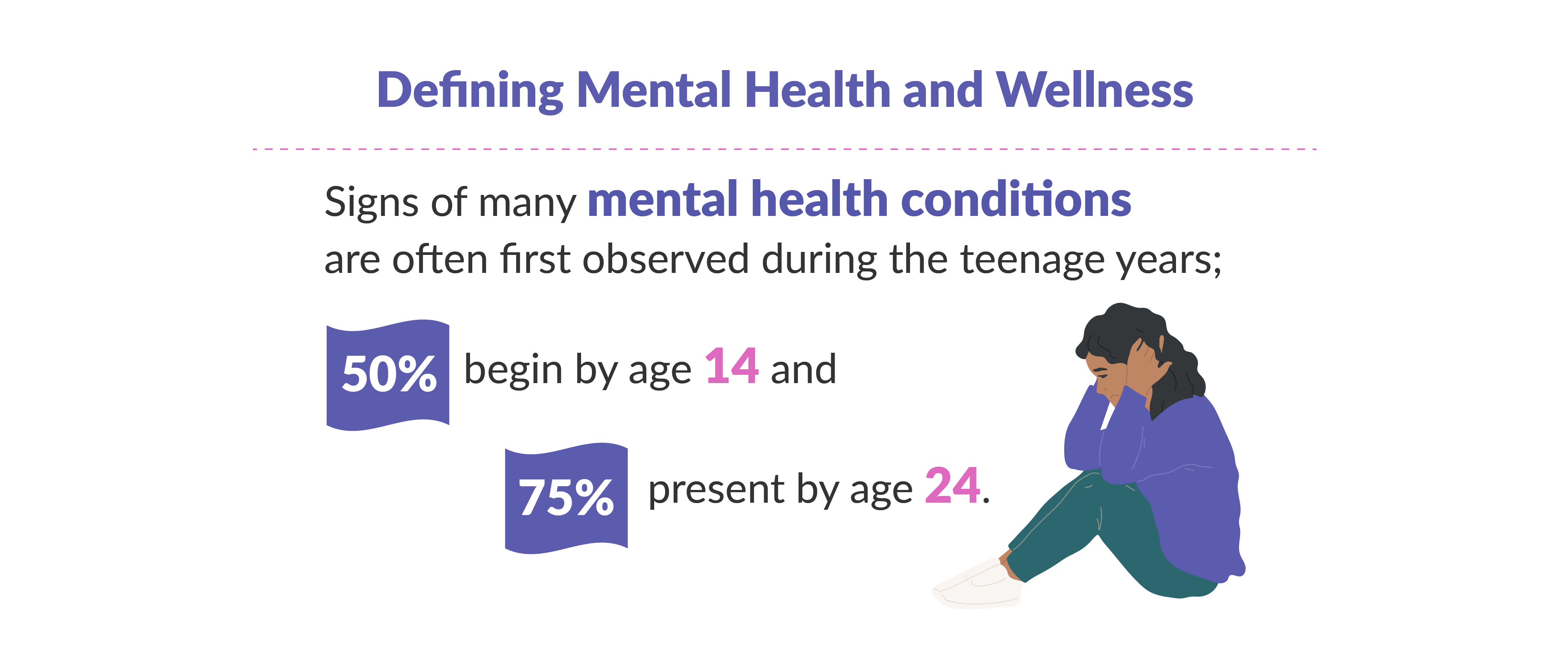
Addressing Teen Mental Health Challenges
Toolkits Tailored for You
Welcome
We're so glad you are here! Everyone struggles with their mental wellbeing from time to time. Seeking support and talking about mental health can be difficult, but it can go a long way towards helping you learn, grow and practice healthy habits that support your whole self. Your loved ones, trusted adults, parents, friends, teachers, and community are here for you. Talk to them or a trained counselor on a hotline today and get the support you deserve.
In fact, Centers for Disease Control and Prevention (CDC) reported that one in six students experienced behavioral or emotional symptoms and impairments that were diagnosable as a childhood mental disorder.1

I Want To:
Get Help Now
Looking for ways to get mental health support now? Start here!
Note: General recommendations for managing mental health challenges are provided; for a unique action plan tailored to your needs please connect with a licensed mental health provider through the resources provided in the toolkit.
Learn what a crisis is, how to identify a person experiencing a crisis, what to expect when seeking crisis services and connect with crisis resources/hotlines.
Learn how the common teen mental health challenges, practice coping strategies and connect to challenge-specific resources: stress, anxiety and depression, suicide, trauma, healthy relationships, social media safety, alcohol and drug use.
Learn about resources for youth identifying as: youth in foster care, LGBTQIA+, males and youth of color, youth with special healthcare needs, and undocumented youth
There is a community of people that want to help through hard times, including a friend, a parent or other trusted adult and school staff. Learn how you can approach them to ask for help with mental health wellbeing.
Maintain Wellness
There are several components to maintaining your health including physical health, mental health, and social and emotional health. Optimal wellbeing is dependent on building and maintaining healthy habits. Learn how you can support your optimal wellbeing daily.
Think of your total well-being as a puzzle. Learn about each piece of the puzzle and how each affects your overall well-being.
Learn four science-based exercises to identify and focus on numerous strengths. These activities have the single purpose of answering one of life’s biggest questions, “How can one be truly happy?”
Positive psychology focuses on positive experiences, human strengths, virtues and well-being.
Resources
Health Services
Attempts
Depression
Relationships